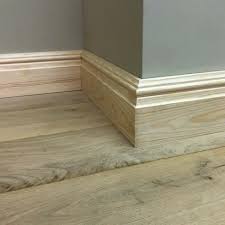Wall moulding represents one of the most effective ways to add architectural character and sophistication to any space. With the wide variety of kits now available, selecting the right one and installing it properly can seem daunting. This comprehensive guide breaks down the process into manageable steps, ensuring you achieve professional-looking results that enhance your home’s aesthetic appeal.
Choosing Your Perfect Wall Moulding Kit
1. Assess Your Space and Style
Begin by evaluating the room where you plan to install diy panelling kit. Consider the existing architectural features, ceiling height, and your personal design preferences. Traditional homes often suit classic profiles like picture frame moulding or wainscoting, while contemporary spaces may benefit from sleek slat walls or geometric patterns. Take measurements of your walls and note any obstacles like windows, doors, or electrical outlets that might affect your design.
2. Understand Material Options
-
MDF (Medium-Density Fiberboard): The most common and affordable option. Perfect for painted finishes and easy to cut. Best for dry areas.
-
Polyurethane: Lightweight and excellent for intricate designs. Moisture-resistant, making it suitable for bathrooms and kitchens.
-
PVC/Vinyl: Ideal for high-moisture areas. Won’t warp or rot and often features interlocking systems for easy installation.
-
Wood: Traditional and durable but typically more expensive and requires more finishing work.
3. Consider the Room’s Function
The purpose of the room should influence your material choice. For high-traffic areas like hallways, durable MDF or wood stands up well to occasional bumps. In moisture-prone bathrooms or kitchens, PVC or polyurethane provide better longevity. For formal spaces like dining rooms, you might choose more elaborate profiles that create a sense of occasion.
4. Set Your Budget
Moulding kits range from basic to high-end. Remember to factor in additional costs for finishing supplies like primer, paint, caulk, and wood filler. More intricate designs may require more material due to waste from cutting complex angles.
Installing Your Wall Moulding Kit
Preparation Phase:
-
Gather Tools and Materials: You’ll need a measuring tape, level, pencil, fine-toothed saw, sandpaper, construction adhesive, caulk gun, wood filler, and painting supplies.
-
Prepare the Wall: Clean the surface thoroughly and repair any significant cracks or holes. If you’re painting the wall, applying a base coat before installing moulding can save time later.
-
Plan Your Layout: Mark your design lightly on the wall using a pencil and level. For grid patterns, calculate spacing to ensure symmetry. Use painter’s tape to visualize the final result before cutting any material.
Installation Process:
-
Cutting Pieces: Measure twice, cut once. Use a miter box or saw for clean 45-degree angles at corners. Sand cut edges smooth for better adhesion and finishing.
-
Test Fit: Dry fit all pieces against your layout marks before applying adhesive. Check that corners meet tightly and patterns align properly.
-
Apply Adhesive: Follow kit instructions for adhesive application, typically in a zigzag pattern on the back of each piece. Press firmly against the wall according to your layout.
-
Secure in Place: Use painter’s tape to hold pieces while adhesive sets. For added security, you can use finishing nails at an angle, countersinking the heads slightly below the surface.
Finishing Touches:
-
Fill and Caulk: Apply wood filler to nail holes and small gaps. Use paintable caulk along all edges where moulding meets the wall, smoothing with a damp finger for seamless transitions.
-
Prime and Paint: Once fillers are dry, lightly sand smooth. Apply a high-quality primer before painting with your chosen finish. Semi-gloss or satin finishes work well for easy cleaning and durability.
Pro Tips for Success:
-
Work in a well-lit area to spot imperfections easily
-
Maintain consistent pressure when applying adhesive
-
Check level frequently—don’t assume your initial lines remain accurate
-
Take extra time with corners—they make or break the final appearance
-
Consider the visual weight of moulding profiles in relation to your room size
By carefully selecting the right moulding kit for your space and following these installation steps methodically, you can transform ordinary walls into extraordinary architectural features. The result is a custom-looking interior that reflects your personal style while adding value to your home. Remember that patience and attention to detail during the installation process will yield the most professional and satisfying results.
